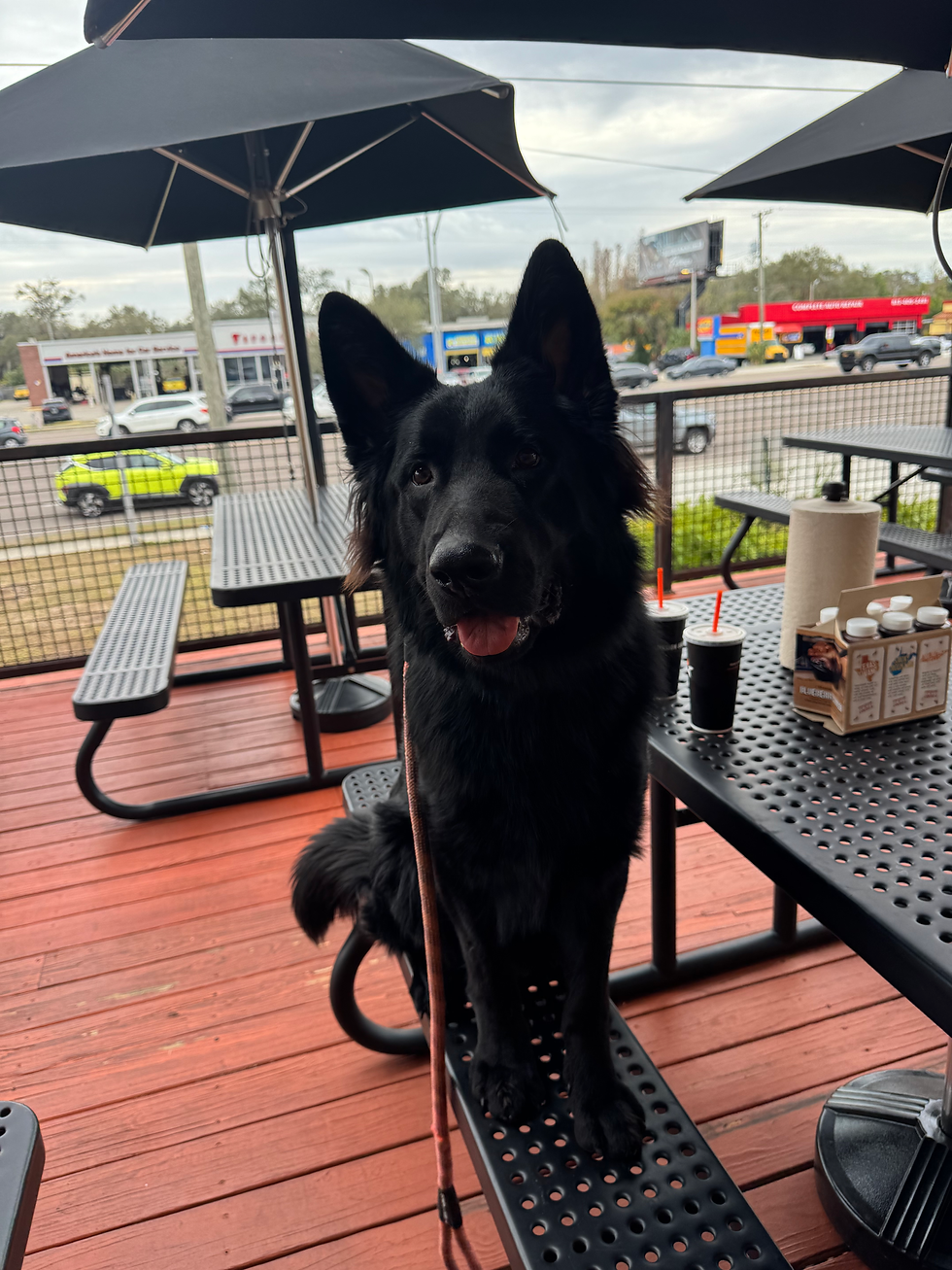Mastering the "Place" Command: A Key to a Calm and Obedient Dog
- Elite K9 Service

- Feb 10
- 3 min read
Teaching the “Place” command is one of the most valuable skills you can give your dog. It teaches them to stay in a designated spot until released, which helps control hyperactivity, reduces unwanted behaviors, and builds overall obedience.
At Elite K9 Service, we use a balanced training approach, meaning we reward correct behavior while applying appropriate corrections when necessary. In this guide, you’ll learn how to teach the “Place” command step by step, when to correct, and how to reinforce the behavior for long-term success.
What is the “Place” Command?
“Place” means your dog goes to a designated area (like a dog bed, mat, or platform) and stays there until you give them a release command.
✅ Teaches impulse control
✅ Helps manage excitement or anxiety
✅ Helps stops behaviors like jumping, barking, or pacing
✅ Makes handling guests, meals, and busy moments easier
How to Teach the “Place” Command
Step 1: Choose a ‘Place’ Object
Pick a designated spot such as:
• Dog bed
• Elevated cot
• Mat or blanket
• Any object your dog can clearly distinguish from the floor
💡 Pro Tip: Elevated surfaces work best because they create a clear boundary, making it easier for your dog to understand where they should stay.
Step 2: Introduce ‘Place’ with a Leash
Lead your dog to the designated spot using a leash.
Say “Place” as you guide them onto it.
The moment all four paws are on the object, reward them (praise & treat).
Encourage them to stay for a few seconds, then use a release word like “Okay” or “Free.”
Repeat the process several times until they associate the command with going to the object.
Step 3: Increase Duration and Distance
• Start with short stays (5-10 seconds) and gradually increase the duration.
• If your dog tries to leave before being released, calmly return them to Place without saying anything.
• Once they understand duration, start adding distance—take a step back, then return and reward.
💡 Remember: You must release your dog every single time. If you forget to give the release word, they won’t learn to wait for your command.
Step 4: Introduce Corrections for Breaking ‘Place’
At Elite K9 Service, we believe in Positive Reinforcement Based Training, but corrections when they break a known command.
If your dog steps off before release:
✔️ Firm “No” + leash guidance back to Place
✔️ If needed, use a leash pop (mild correction) to reinforce the boundary
✔️ Do NOT reward after a correction—only reward when they stay successfully
Corrections are not about punishment, they are about clear communication—breaking “Place” should always have a consequence so the dog learns to respect the command.
Step 5: Add Distractions
Once your dog understands Place, it’s time to test their focus!
🔹 Walk around them while they stay on Place
🔹 Clap, jump, or make noises to tempt them
🔹 Have another person walk by
🔹 Toss a toy nearby
If your dog holds Place—praise heavily!
If they break—correct and guide them back.
Step 6: Proofing the Command in Real-Life Scenarios
The real power of “Place” comes from using it in everyday situations:
🏡 When guests arrive: Instead of jumping on people, send your dog to Place.
🍽️ During mealtimes: Keeps your dog from begging or pacing.
📺 When you need a calm house: Stops excessive barking or overexcitement.
🚪 At the door: Prevents bolting and teaches patience.
The goal is to make ‘Place’ a default behavior when your dog needs to relax and stay controlled.
Common Mistakes & How to Fix Them
❌ Letting your dog leave Place without release
✔️ Always release them with “Okay” or another clear word.
❌ Not correcting when they break Place
✔️ Guide them back immediately—consistency is key.
❌ Making it too easy
✔️ Once they understand, start adding distance, distractions, and duration.
When Should You Start Teaching ‘Place’?
The earlier, the better! Puppies can start learning as early as 8 weeks, but adult dogs can pick it up quickly too—especially with consistent corrections and rewards.
When to Seek Professional Help
If your dog ignores the Place command, refuses to stay, or gets anxious when left on Place, professional training can help. At Elite K9 Service, we specialize in balanced training methods that help dogs master this command reliably—even in high-distraction environments.
Need expert guidance? Contact Elite K9 Service today for custom training solutions!










Comments